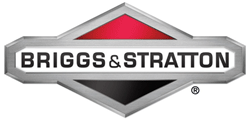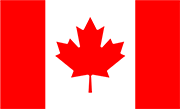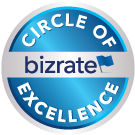Make sure you haven't got the discount earlier.
Appliance Parts
- Accessories
- Dishwasher
- Dryer
- Stove / Oven
- Microwave
- Refrigerator
- Washer
- See more... See less...
Lawn Equipment Parts
- Lawn Mower
- Chainsaw
- Blower
- Generator
- Air Compressor
- Lawn Tractor
- Pressure Washer
- See more... See less...
Managing Sodium: A Major Part of Your Diet
Sodium is a necessary component in the diet of humans and animals. The bodies of mammals use sodium to keep many functions of their bodies working properly. Besides the role of sodium in our bodies, it is also used to preserve foods through pickling, and sometimes by making jerky from meat. Many people use sodium, in the form of table salt, as seasoning for food, but it is estimated that most use ten times what is necessary for their bodies, which is approximately 2,300 mg per day.
The dangers of sodium are present in the media frequently. Sodium is known to be a contributing factor in high blood pressure. A person with high blood pressure is more likely to experience a stroke or develop heart disease. Sodium in the diet is known to cause water retention in a person. Therefore, a diet high in sodium may be damaging to the kidneys as well if the kidneys work harder to excrete the excess fluid caused by the sodium.
The following topics will explain sodium and its role in the human body, focusing on the role of sodium in the diet, the dangers of excessive sodium, recommended amounts of sodium, sources of sodium, and ways to control the amount of sodium that goes into the diet.
Why Is Sodium Necessary?
Sodium is necessary to form electrical charges in the cells of our bodies. Sodium ions oppose the force of potassium ions in the body creating the electrical charge. This aids neuron transmissions through the body system, or allows communications between the brain and the nerves. Sodium also assists the kidneys in balancing the body’s fluid amount. When sodium causes fluid to be retained in the body, receptors in the heart and blood vessels sense the pressure in the blood and osmoregulation occurs. Osmoregulation is the control of levels of water and mineral salts in the body resulting in the rid of excess fluid through urination.
- Understanding Salt and Sodium
- Salt Health Benefits - Vital for a Healthy Life
- How the Human Body Handles Salt
- Electrolytes
How Does Sodium Contribute to Health Problems?
Increased sodium in the diet is one of the primary factors of high blood pressure. This is caused by the fact that the increased sodium causes an increase in the fluid in the blood vessels pumping to and from the heart. This, in turn, causes the heart to work harder than necessary, causing an increased blood pressure. High blood pressure is the most significant risk factor of stroke, as the increased pressure in the vessel can cause a vessel in the brain to burst. Furthermore, the kidneys, while working to restore the equilibrium of fluid in the body, may become overworked, and eventually fail, when faced with too much sodium.
- Harmful effects of dietary salt in addition to hypertension
- Just Kick the Salt Habit - Negative effects of Sea Salt, Iodized Salt.
How Much Sodium is Recommended?
Most experts agree that people should consume no more than 2,300 mg of sodium per day. That may seem like a good deal of table salt to most people. However, if they examined the labels, sodium is contained in many different prepared foods when bought at the grocery store. So, it is best to read labels, add up the number of milligrams of sodium one is actually taking in, and not just to rely on the amount of table salt one uses daily.
- Sodium in diet: Medline Plus Medical Encyclopedia
- Daily Sodium Intake: Watching daily sodium intake is important for some
- Recommended Sodium Intake Values for Each Age Group
- Daily Values vs. nutritional recommendations for children
- Discovery Health: Sodium Assessment
- Sodium in the Diet
What are the Sources of Sodium?
Most people believe that the most common source of sodium is the table salt that is used to season their foods. However, there is much more sodium in foods that are pre made, or processed, then many realize. Some foods are typically higher in sodium than others, and those who are trying to follow a low-sodium diet should watch to avoid such foods as canned soups, mixes, condiments, and some processed meats. It’s best to read the label before purchasing to be aware of the amount of sodium in any given food source.
- Sodium (Salt or Sodium Chloride)
- Nutritional Sources of Sodium
- List of specific foods: Result of grouping like foods reported in 2003–2006 NHANES
- Sodium: How to Tame Your Salt Habit Now
- Sodium, Salt, and You
How to Control Sodium Intake
There are many ways to control one’s sodium intake. First and foremost, it's important to put the saltshaker down. Most foods processed in the United States contain enough sodium to fulfill a person’s sodium requirement for the day. Read labels to determine the true amount of sodium intake. Be careful to read the amount per serving and be realistic about the number of servings that will actually be eaten in a sitting. There are salt substitutes for those who appreciate the taste of table salt as a seasoning, and there are also many foods that have a lower-sodium content that do not compromise taste.
- Sodium Content of Your Food
- Reduce Salt and Sodium in Your Diet
- Salt and Sodium: How to Cut Back
- Reducing the Sodium in Your Diet
- Search your model number to find:
- Genuine OEM parts guaranteed to fit
- Free manuals and guides
- Repair instructions and videos


































